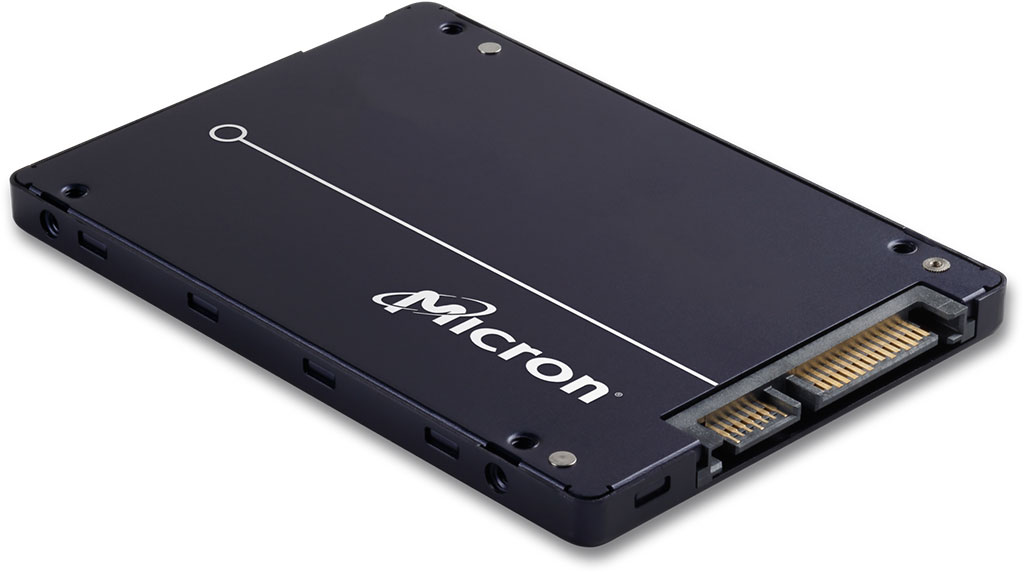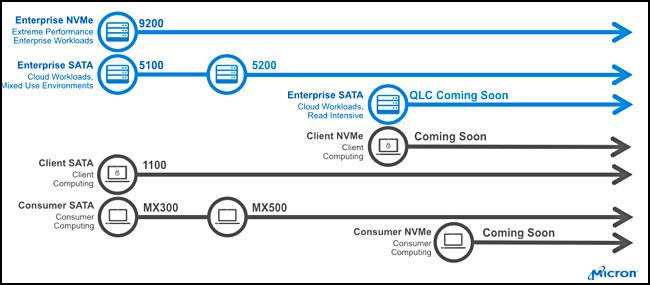Micron's 3D QLC NAND flash memory could lead to higher capacity SSDs
More bits per cell = more capacity (potentially).

Micron is planning to launch a line of solid state drives based on three-dimensional (3D) quadruple-level cell (QLC) flash memory, similar to what Toshiba announced last June. While initial products will take aim at the enterprise sector, and in particular datacenters that rely on 7,200 RPM hard drives, according to The Register, it's only a matter of time before this trickles down in to the consumer space.
When and if that happens, we could be looking at larger capacity SSDs at more attractive price points. That's because QLC flash memory offers a 33 percent higher bit density and lower per-bit cost compared to triple-level cell (TLC) flash memory that is commonly found in high-capacity SSDs currently.
As its name implies, QLC flash memory consists of 4 bits per cell, versus 3 bits per cell for TLC memory. Micron did not get into the technical challenges that come with bumping up the density, but one thing to note is that multi-bit flash memory chips store data by managing the number of electronics (the charge) in each individual cell. That being the case, a 4-bit-per-cell solution requires twice the accuracy of TLC memory. SLC NAND only tracks two voltage states, MLC (2-bits per cell) tracks four voltage states, TLC has eight voltage states, and now QLC has 16 voltage states.
When Toshiba announced QLC flash memory last year, the company offered up a vague explanation on how it dealt with this, saying it drew on its advanced circuit design capabilities and 64-layer 3D flash memory process technology to create QLC 3D flash memory.

Micron did not get into the specifics of its own QLC memory either, nor did the company say what capacity QLC SSDs are on tap. However, it did show off a wafer with 64GB 3D QLC NAND flash memory chips, which indicates that it has storage products ready to ship (or soon will). The first batch will have a SATA interface, though Micron said it is planning to release NVMe models, both for the enterprise and consumer markets.
What this all means is that we will likely see higher capacity QLC SSDs later this year, ones that potentially offer a better bang-for-buck (price per gigabyte) than what's currently available.
Keep up to date with the most important stories and the best deals, as picked by the PC Gamer team.
Paul has been playing PC games and raking his knuckles on computer hardware since the Commodore 64. He does not have any tattoos, but thinks it would be cool to get one that reads LOAD"*",8,1. In his off time, he rides motorcycles and wrestles alligators (only one of those is true).


